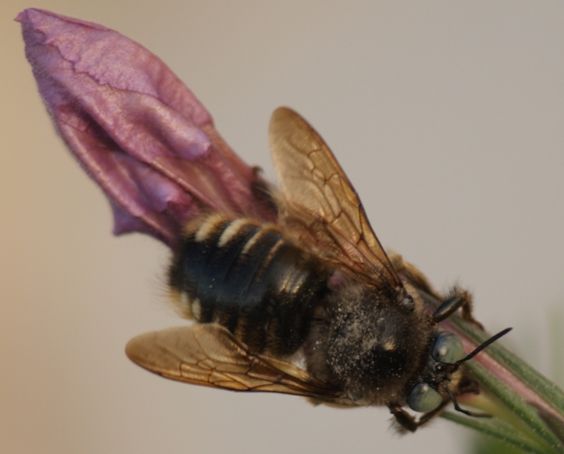The large carpenter bees (Hymenoptera: Apidae: Xylocopa spp.) of Nuevo León, México
DOI:
https://doi.org/10.26786/1920-7603(2012)3Abstract
There is a severe information gap regarding wild bees in northern Mexico. The present study is a contribution to knowledge of the distribution, habitat preferences and floral usage patterns of bees of the genus Xylocopa in the state of Nuevo León. Field sampling was done using aerial net and pan traps (yellow, blue, white and pink) at 35 sites throughout the state. Xylocopa species were found at only seven of these sites. Four of the five species, previously reported for the state were collected plus two new state records (Xylocopa micans and X. strandi), bringing the total number of species in the state to seven. Individuals were collected visiting only flowers of the Fabaceae and Bignoniaceae families, and they occurred primarily in shrub lands and disturbed areas.

Downloads
Published
How to Cite
Issue
Section
License
Copyright (c) 2012 Liliana Ramirez-Freire, Glafiro Jose Alanis Flores, Ricardo Ayala Barajas, Humberto Quiroz Martínez, Carlos Gerardo Velazco Macías

This work is licensed under a Creative Commons Attribution 4.0 International License.
JPE is an open access journal which means that all content is freely available without charge to the user or his/her institution.
Authors who publish with this journal agree to the following terms:
1) Authors retain copyright and grant the journal right of first publication with the work simultaneously licensed under a Creative Commons Attribution License that allows others to share the work with an acknowledgement of the work's authorship and initial publication in this journal.
2) Authors are able to enter into separate, additional contractual arrangements for the non-exclusive distribution of the journal's published version of the work (e.g., post it to an institutional repository or publish it in a book), with an acknowledgement of its initial publication in this journal.
3) Authors are permitted and encouraged to post their work online (e.g., in institutional repositories or on their website) prior to and during the submission process, as it can lead to productive exchanges, as well as earlier and greater citation of published work (See The Effect of Open Access).
To assure a broader targeted audience, content will be included into databases (such as EBSCO) and directories (such as DOAJ).











